Melting permafrost threatens mountain regions. What can be done?

From unstable slopes to rock falls, the thawing of the layer of frozen rock known as permafrost will have many consequences for mountain regions, including the Swiss Alps. Swiss scientists are leading global efforts to understand the problem and try to find solutions.
Permafrost thawing is highly problematic for mountain huts, avalanche protection structures or cable cars that are often built on the frozen rock layer.
A study by the Swiss Alpine Club (SAC) published last yearExternal link revealed that over one-third of their 152 mountain huts were endangered due to thawing permafrost. Another 42 huts are threatened by landslides from permafrost zones.
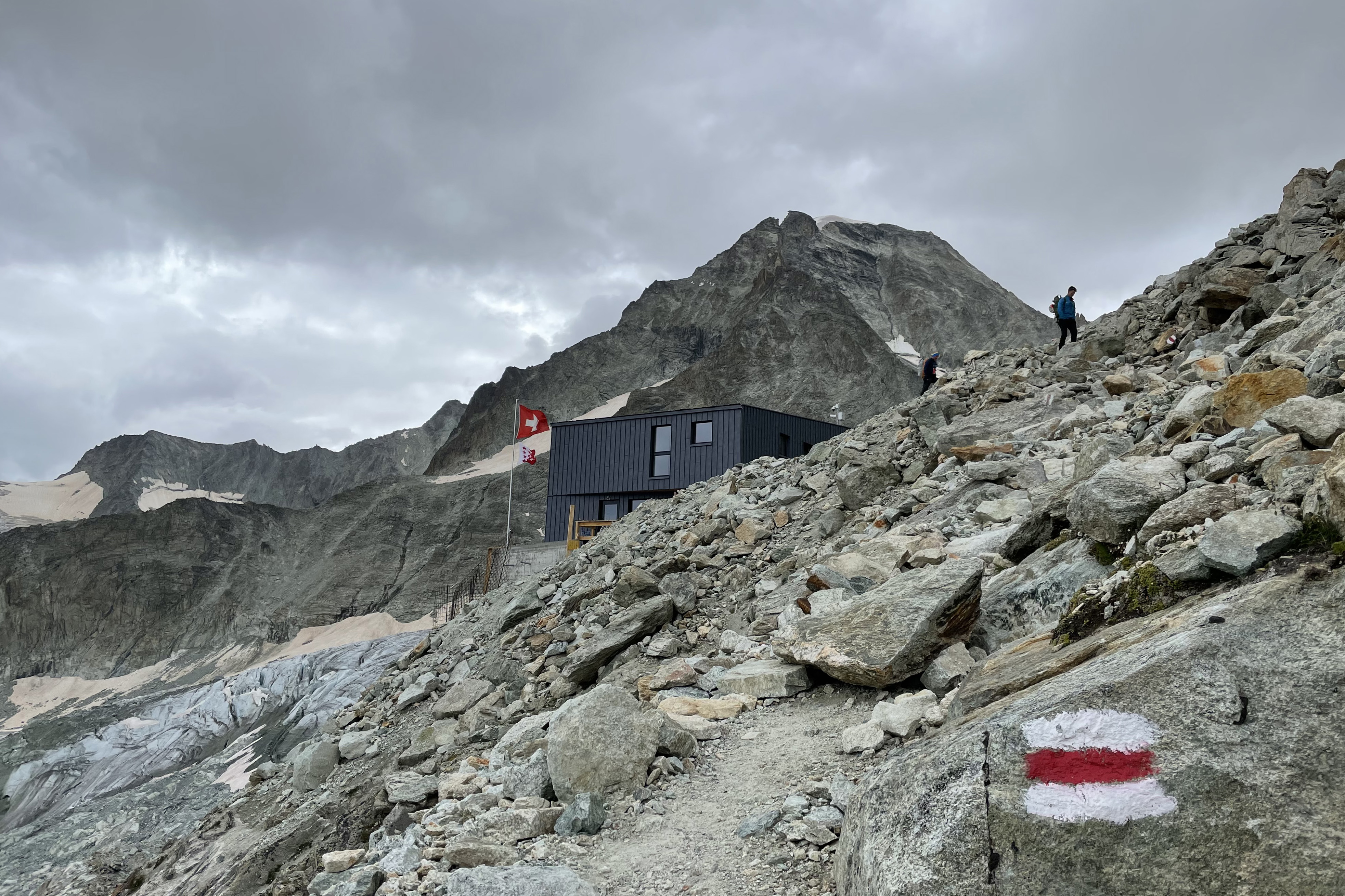
Thawing permafrost, more natural hazards and altered landscapes require major investments and innovative adaptations in hut design and construction, the club says. A fund set up by SAC will not be sufficient to finance construction projects. The club is therefore dependent on partnerships and donations.
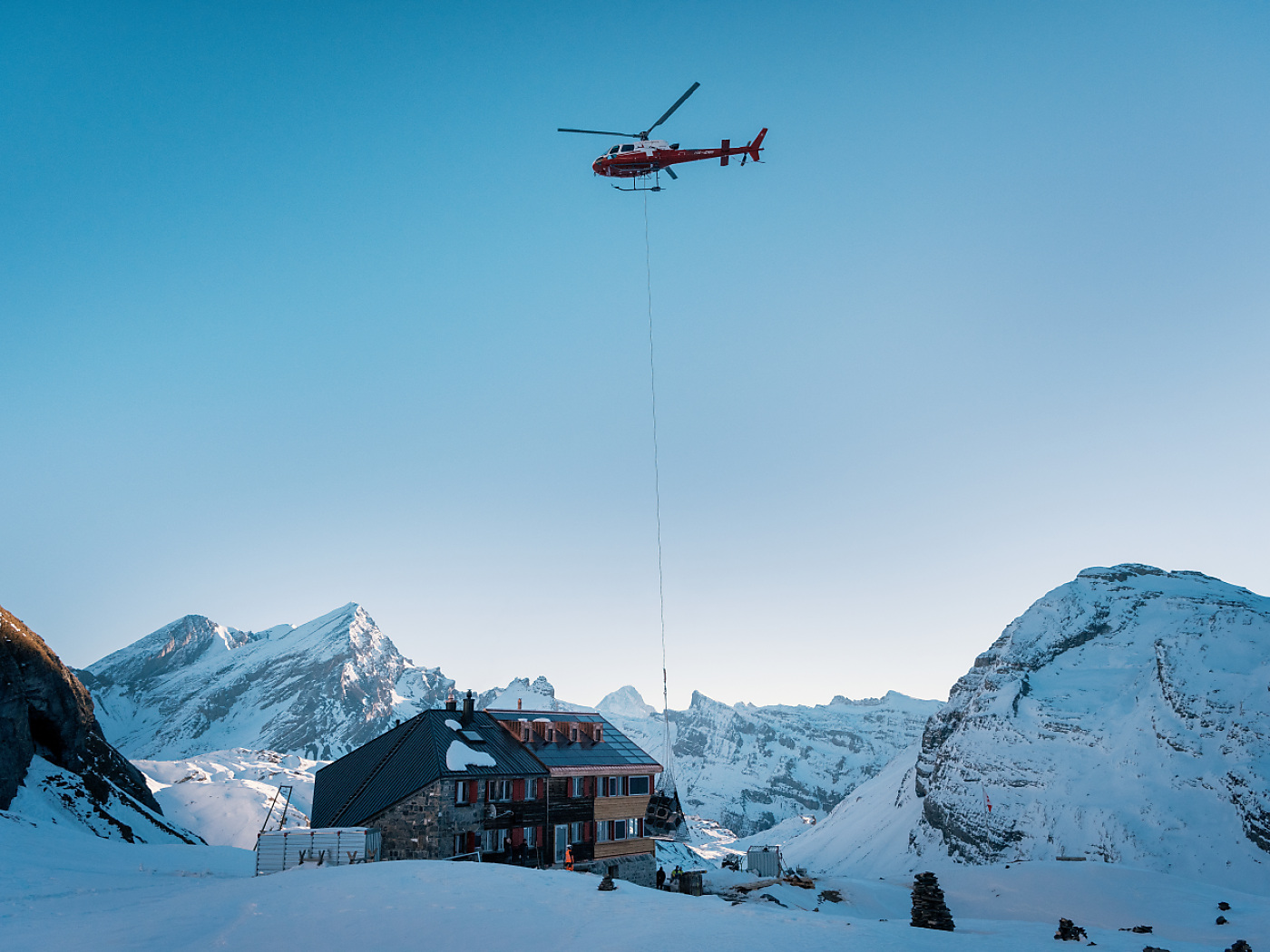
More
Thawing permafrost threatens dozens of mountain huts in Switzerland
In Switzerland, the Federal Office for the Environment estimates that 6-8% of Switzerland’s territory is unstable. Settlements below permafrost zones must increasingly expect landslides and mudflows in the years ahead.
>>Read this reportage below from Kandersteg, a popular Swiss mountain resort in the Bernese Oberland, where villagers live with the threat of a nearby mountain tumbling down.

More
Climate threats: living in the shadow of a crumbling mountain
How thawing Arctic permafrost releases CO2
As global temperatures rise, the frozen soil of the Arctic has started to thaw, triggering the release of more methane and carbon dioxide into the atmosphere.
After locking CO2 in its frozen soil for centuries, the Arctic tundra is undergoing a dramatic transformation, driven by frequent wildfires that are turning it into a net source of carbon dioxide emissions. This stark shift was reportedExternal link last December by the US National Oceanic and Atmospheric Administration (NOAA), which revealed that annual surface air temperatures in the Arctic in 2024 were the second-warmest on record since 1900.
Climate warming has dual effects on the Arctic. While it stimulates plant productivity and growth, which remove CO2 from the atmosphere, it also leads to increased surface air temperatures that cause permafrost to thaw. When permafrost thaws, carbon trapped in the frozen soil is decomposed by microbes and released into the atmosphere as carbon dioxide and methane, two potent greenhouse gases.
+ Loss of permafrost – a global cause for concern
Human-caused climate change is also intensifying high-latitude wildfiresExternal link. More areas have burned more intensely, releasing more carbon into the atmosphere.
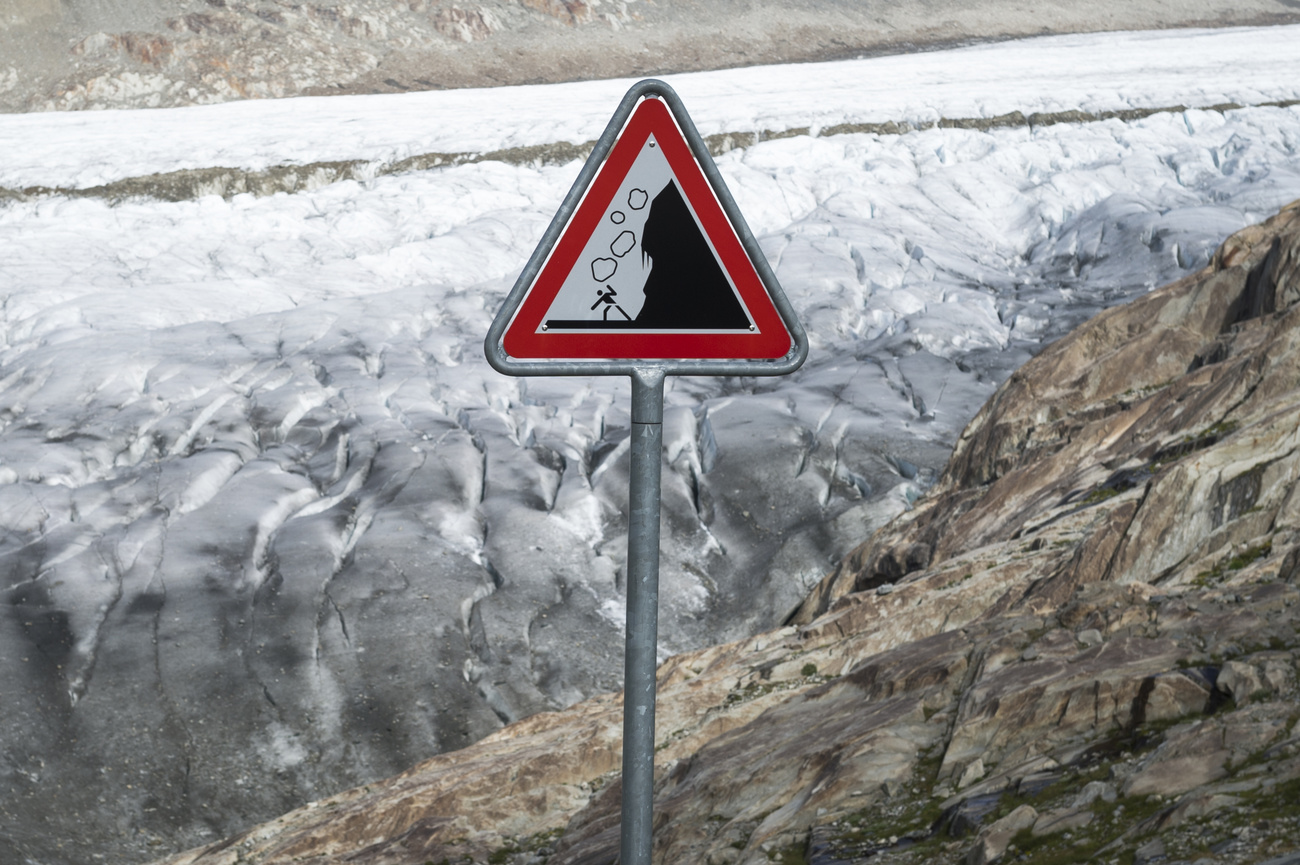
More
How climate change is threatening permafrost’s delicate balance
Scientists are especially worried by new researchExternal link that reveals that as the Arctic gets warmer, large quantities of greenhouse gas could be released from the sediment at the bottom of lakes in the region, a source that has previously been overlooked. Most modelling of the release of CO2 from Arctic permafrost only accounts for thawing in the top three metres of soil.
An estimated 1.5 trillion tons of carbon remain stored in permafrost, according to NOAAExternal link. By comparison, almost 40 billion tonsExternal link are released into the atmosphere each year worldwide.
Switzerland leads global permafrost research
Switzerland established the first national monitoring network (PERMOSExternal link) in 2000. Measurements that began in 1987 on Piz Corvatsch in eastern Switzerland are the longest running in the world for mountain permafrost.
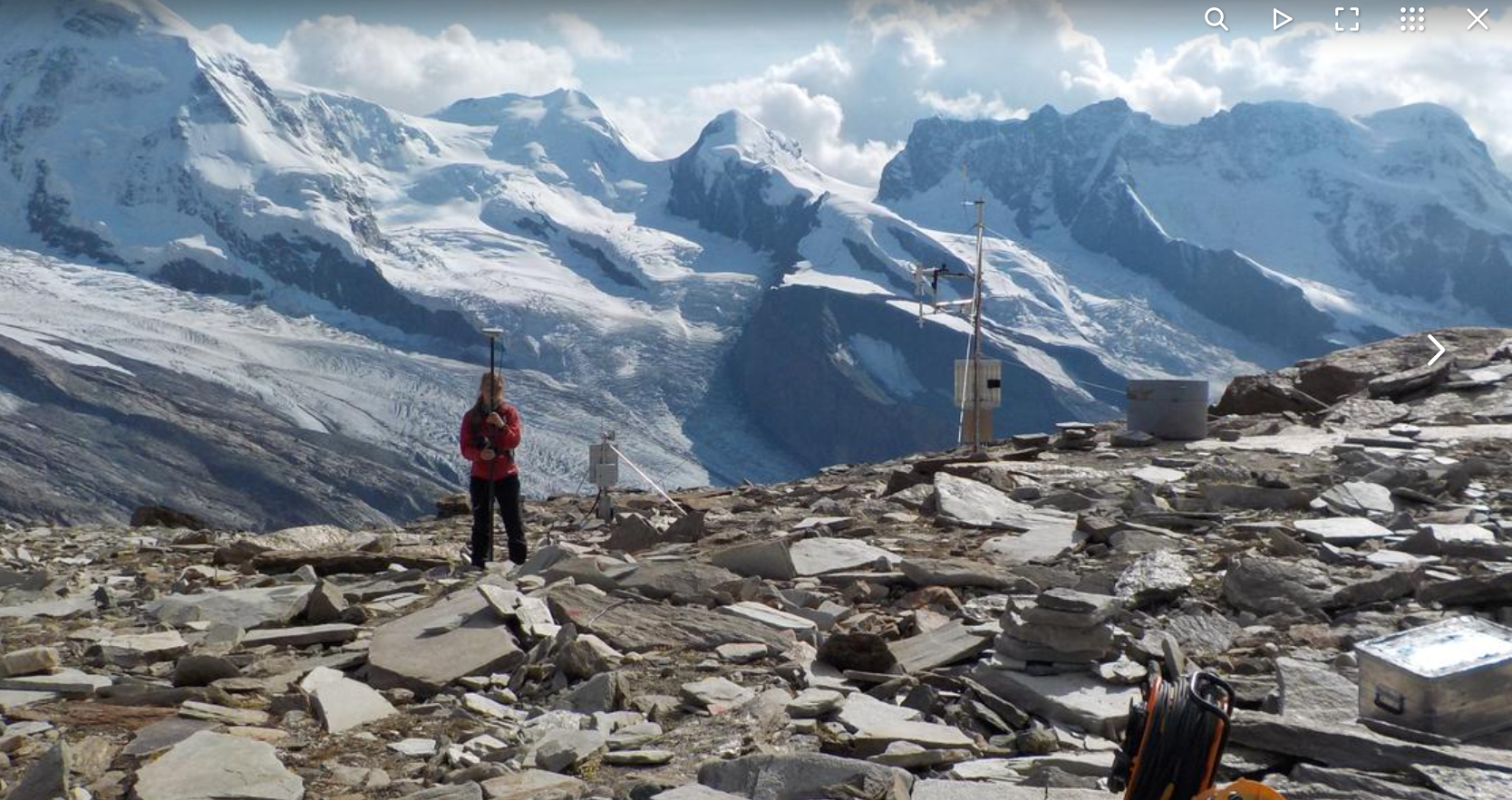
In 2024, Swiss permafrost measurements reached another milestone when a Swiss research team developed a new method to quantify soil ice loss. This method can be used not only in the Alps but also in the Arctic.
+ Thawing permafrost decoded by breakthrough Swiss research
Swiss permafrost experts can be found all over the world. Working with the local population, scientists from Switzerland under the lead of the WSL Institute for Snow and Avalanche Research (SLF) in Davos, Switzerland, last year began a four-year permafrost and snow research projectExternal link in Bhutan funded by the Swiss National Science Foundation (SNF-SPIRIT) to develop measures to reduce climate-related risks in high mountain regions.
In recent years there has been much research into climate-related risks in high mountain regions in neighbours India and Nepal but almost nothing in Bhutan, the small landlocked nation nestled in the Eastern Himalayas.
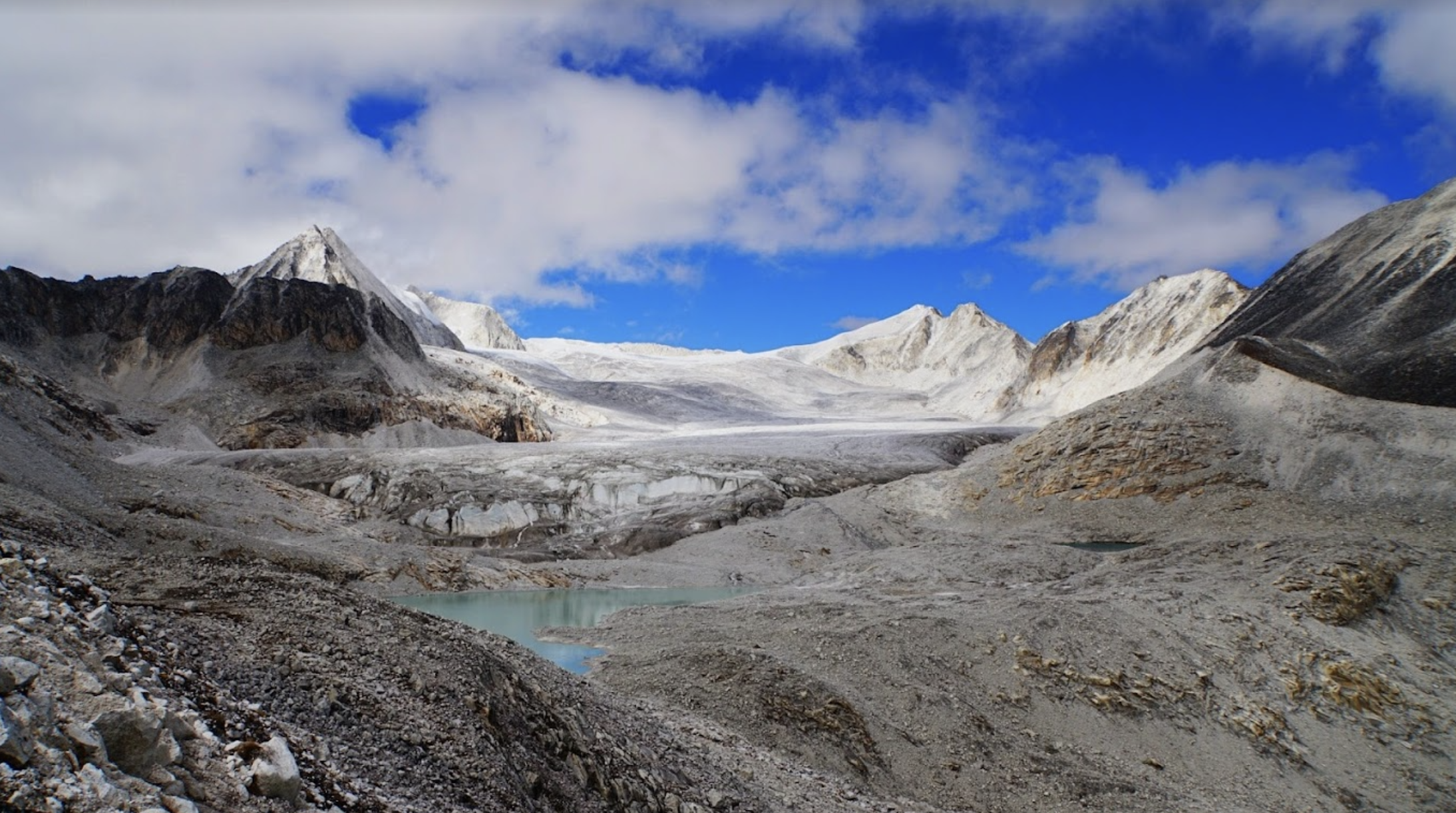
“It’s important to know what’s going on at very high altitudes. Villagers in Bhutan often don’t know what’s happening up there. It’s important to at least know the potential hazards and then also install some kind of early-warning systems as it’s also done in many parts of Switzerland and in India and China,” Nadine Salzmann, head of the Alpine Environment and Natural Hazards research unit at SLF, told SWI swissinfo.ch.
She made a first visit to Bhutan last September to conduct experiments, install instruments in high-mountain regions, and raise awareness on permafrost and snow among locals, authorities, NGOs and scientists.
Similar challenges
Switzerland and Bhutan are of a similar size and topography and face similar challenges in terms of climate change. “We are using methods that we previously tested in Switzerland and are now ready for the extreme conditions there,” explained Salzmann.
The team travelled to a research site near Thana Glacier at about 5,200 meters above sea level where they installed around 20 sensors to measure ground surface temperature and indicate the presence of permafrost. Such devices have been used by the Permafrost Monitoring Network PERMOS in Switzerland for many years. “They are very well tested and therefore suitable for also very remote areas,” she said.
The team also installed a completely new automatic weather station and a cosmic ray sensor which can provide daily snow water equivalent measurements – the amount of water stored in a snowpack – in remote areas. This will give valuable information on precipitation and snow accumulation in very high altitudes.
“This is something we are seriously missing worldwide,” said Salzmann.
From permafrost mapping to risk-awareness, knowledge is power
The researchers also mapped landforms that indicate permafrost, such as rock glaciers. These include debris slopes, glacier forefields and ice-filled moraines. “Our aim is to create the first regional map of potential permafrost occurrence in Bhutan,” she added.
A second pillar involves capacity building. The Swiss project is pursuing a gender-specific approach to risk analysis. This involves seeing how local women, who often work in agriculture, deal with hazards such as landslides, changes in water supply or glacial lake outbursts, and whether their local knowledge can improve early-warning systems.
As well as educating local youngsters about the risks, the Swiss hope their project will also offer interesting longer-term scientific perspectives for university students in Bhutan, which is confronted with an “extreme brain drain” with many young adults choosing to move abroad, especially to Australia, says Salzmann.
During the remainder of the project, the Swiss team plan to expand fieldwork to other parts of Bhutan and install more instruments for detailed analysis work.
“It’s really the beginning of getting to know what’s going on in high altitudes,” said the Swiss researcher.
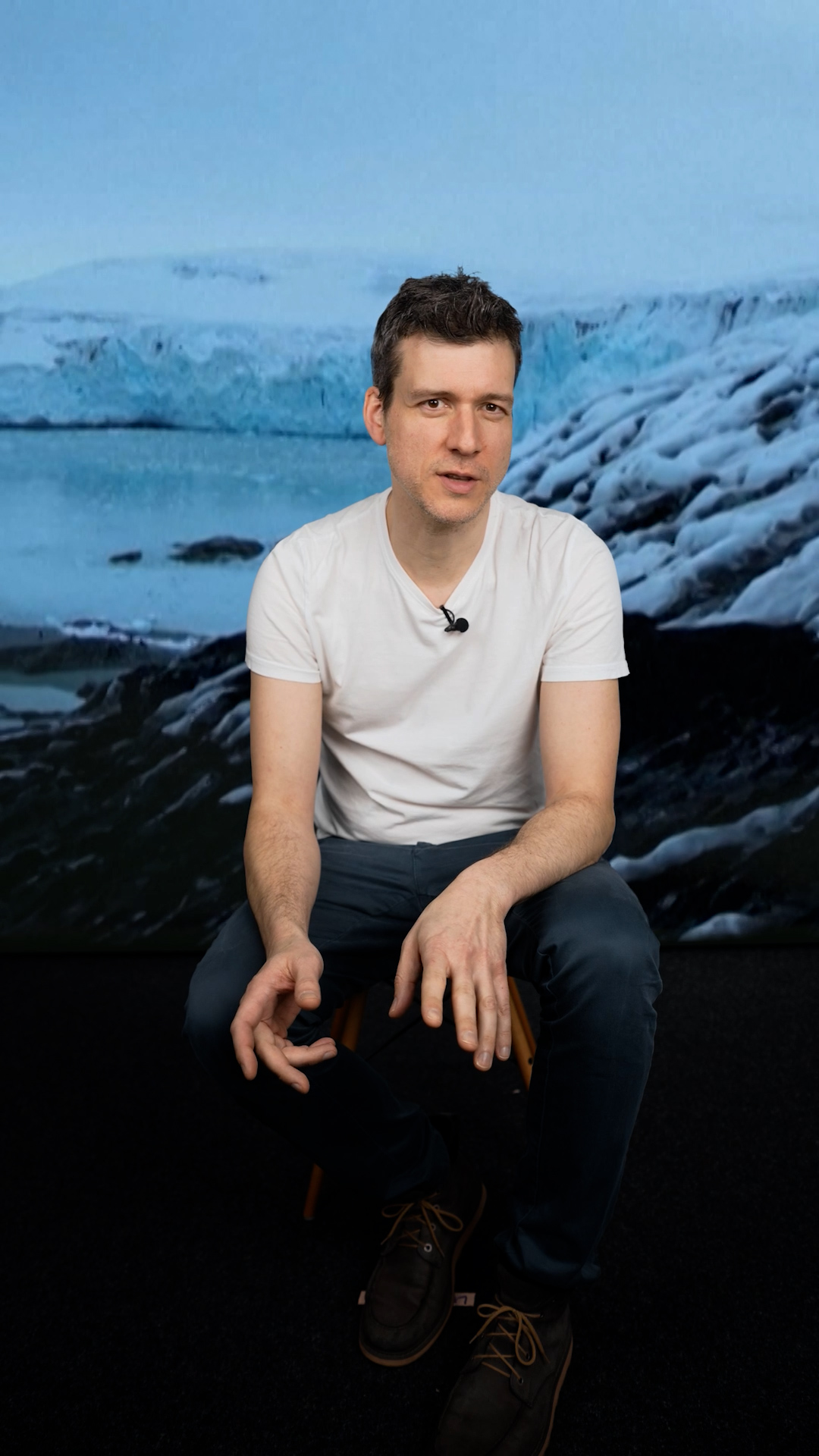
More
What is permafrost and why is it a threat?
What are possible solutions to melting permafrost?
While research into reducing risks is crucial, Salzmann says the only way to properly mitigate and even slow the permafrost thawing trend is to significantly reduce human-induced greenhouse gas emissions now. “Overall, and on a large scale, the longer-term trend is clearly thawing,” she warns.
In icy regions like in Canada and Alaska, communities are nonetheless working hard to address the challenges. Adaptation measures include installing monitoring systems, the mapping of landslide risks, strengthening buildings, relocating infrastructure, and better public awareness.
In some locations, engineers have used passive cooling methods to build on and preserve permafrost. One technique involves the regulation of convective heat loss from the ground and the use of cold ambient air to cool the permafrost via ventilation ducts, crushed rock embankments and thermosyphonsExternal link, a passive refrigeration device that employs a method of passive heat exchange based on natural convection.
SolarFrost
Research in this field is also going on in the Swiss Alps. Elizaveta Sharaborova, a PhD student at the Swiss Federal Institute of Technology Lausanne (EPFL) and SLF, and other scientists are investigating how infrastructure endangered by thawing mountain permafrost may be stabilised. For their “SolarFrostExternal link” project, they have built a demonstration of a novel system that comprises cooling pipes buried shallow underground connected to a solar-powered heat pump to create a sub-freezing layer.
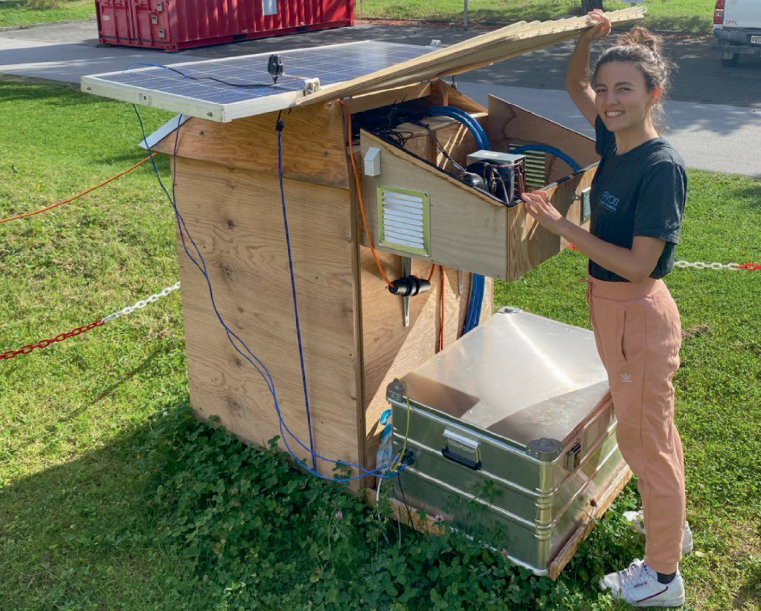
Simulations show that the system enhances natural winter cooling and preserves permafrost in summer by creating a frozen barrier layer that prevents heat penetration and protects the deeper frozen permafrost below.
“The aim is not to freeze permafrost everywhere but to protect certain infrastructure built on permafrost. That’s why we’re looking specifically at implementing it for cable cars and railways in the mountains,” Sharaborova told SWI swissinfo.ch. Previously the technology has been successfully tested on low-land permafrost areas; lab tests are continuing in Switzerland.
Meanwhile in northern Siberia, a father-and-son team of Russian scientists is attempting to introduce large herbivores such as horses and bison to the Arctic tundra to restore the ‘mammoth steppe’ grassland ecosystem and mitigate global warming. The scientists believe that shifting the landscape from woody vegetation to grassland will enhance the protection of the carbon-rich permafrost, reduce carbon emissions associated with permafrost thaw and increase carbon capture in the soil. More work is needed however, to determine if such unconventional “rewilding” methods might be an effective way to address the risks posed by melting permafrost.
Edited by Veronica De Vore

More
Newsletters

In compliance with the JTI standards
More: SWI swissinfo.ch certified by the Journalism Trust Initiative








You can find an overview of ongoing debates with our journalists here . Please join us!
If you want to start a conversation about a topic raised in this article or want to report factual errors, email us at english@swissinfo.ch.